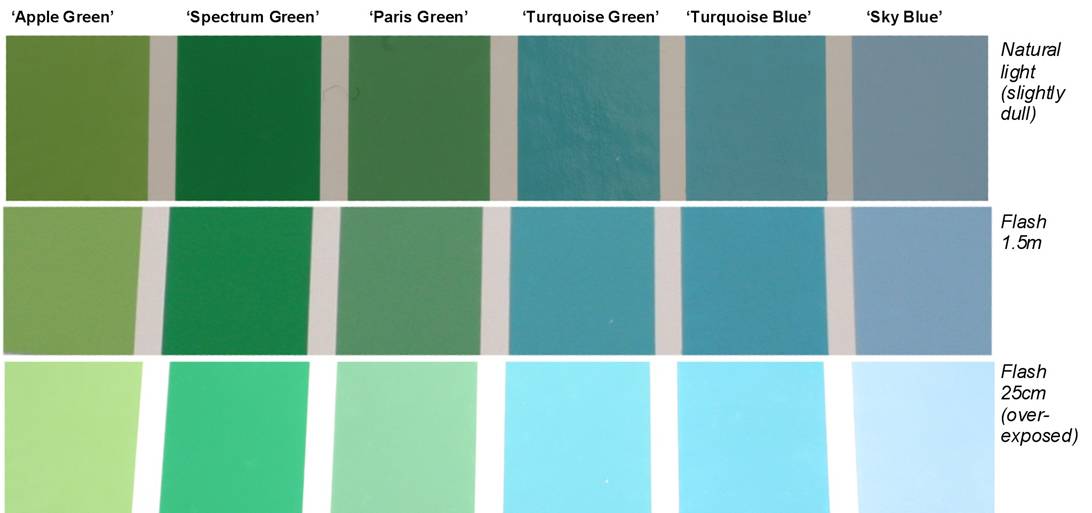It might not have done John much
good if he had had his camera with him.

Apart from crude digitizing and
compression effects, the colour in most photos is affected, deliberately or
otherwise, by editing. Field guides and most printed media are very poor
at showing colours because of variations in inks and processing
limitations. Some field guide illustrations are wildly inaccurate.
The above are unedited (except for cropping and saving) examples from the
colour guide. The colours you will see on your monitor, will be different
from what I see on mine. When I hold the colour guide against my monitor
I see different colours again, but then I am using a fluorescent light, a
strong distorter of ‘natural’ colours, as you will know if you pay
attention to your ‘white balance’.
In the panel I sent previously there were
various apparent colours depending on the exposure. The above names for
colours have no particular authority, being taken from names manufacturers gave
their pigments. ‘Rufous’, for example, covers a wide range of
colours. That is why HANZAB uses the numeric citation. Even with that reference and the colour guide you will
only see what the describer saw if you look at the guide with the same light
(either ‘diffuse natural light’ or a ‘Phillips 60W
Daylight’ globe). Incidentally the only ‘turquoise’ I
can see in a Turquoise Parrot is in the female (one included in previous
panel).
Perhaps the colour John saw was a result
of fresh plumage and the quality of the light (or blue-green can look blue if
the bird is on a green lawn). HANZAB gives as the colour of the male
RRP’s forecrown, lower cheeks etc ‘green-blue (c164)’.
Bear in mind that under the HANZAB convention this means more blue than
green. (Juvs are duller with less blue.) For the above reasons
there is not much point my reproducing Colour 164, but, oh well, here it is,
photographed in diffuse natural light:

----Original Message-----
From: John Leonard [
Sent: Wednesday, 12 December 2007 3:28 PM
To: Julian Robinson; Canberra Birds
Subject: juvenile RR Parrots
Certainly I don;t think the field guides show enough of
the blue wash
on the face of adult male RRPs, as your excellent photos
do. However
my impression was that these juveniles had an even stronger
blueish
wash, coupled with the olive-green female/juvenile
plumage. It was
quite striking. Pity I didn't have my camera with me!
cheers
John L

